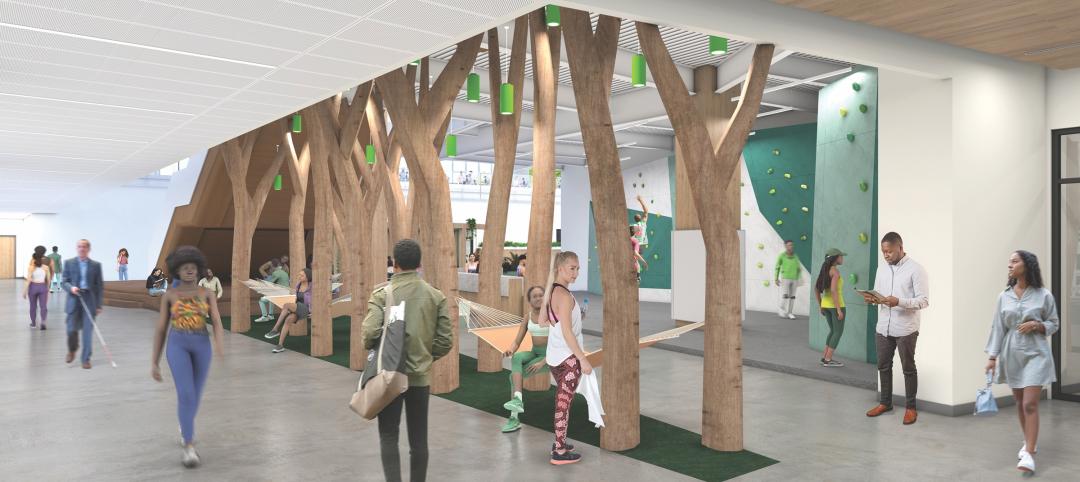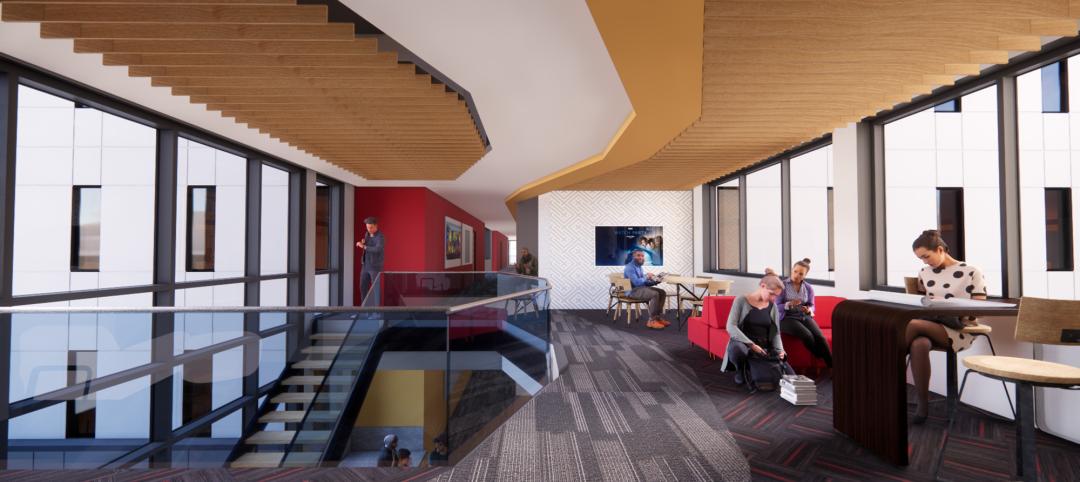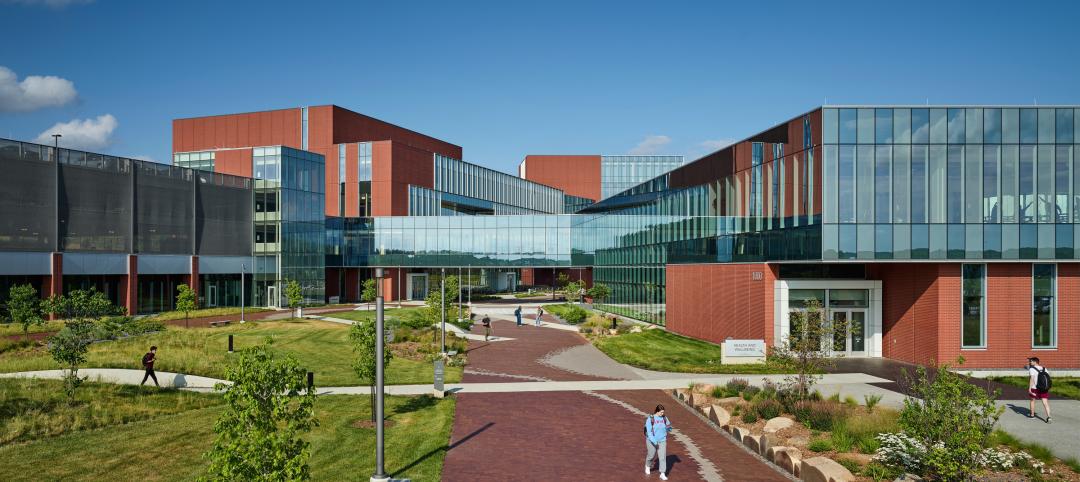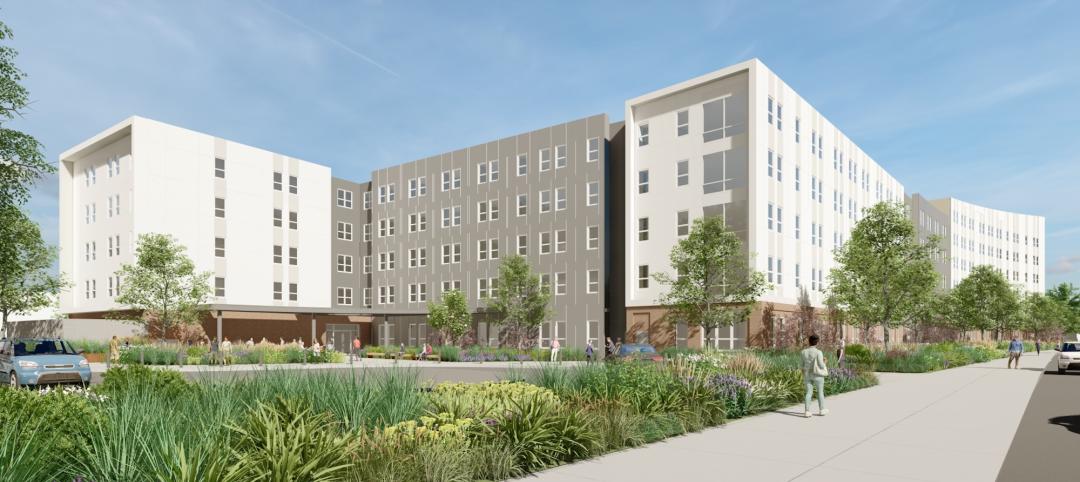Much of the spirited discussion around LEED v4 has been centered on the Materials & Resources Credit, Building Products Disclosure and Optimization – Material Ingredients—especially with regard to building products containing substances that could be toxic to humans or the environment.
At least one voice in the wilderness is shouting for greater attention to another huge change in LEED: the shift to ASHRAE 90.1-2010 as the new reference standard for Energy & Atmosphere prerequisites and credits. “That’s the real story in LEED v4, from an MEP point of view,” says Scott Bowman, PE, LEED Fellow. “The change to 90.1-2010 makes v4 much more rigorous.”
Bowman, who recently retired as Corporate Sustainability Leader at KJWW Engineering Consultants (where he was involved in 119 LEED-certified projects), says Building Teams need to start warning their clients that it’s going to be a lot tougher to reach LEED Gold or Platinum under v4. He says that some of the 14 LEED Platinum projects that he worked on at KJWW might barely squeak by with a Silver or Gold rating under v4. Projects that were Silver or Gold might not even reach certified.
“We need to be working on our clients’ expectations now, because the changes that are coming are going to be significant,” says Bowman, who recently established his own consultancy, Integrated Design + Energy Advisors, known as IDEA. “Our clients should know that we may have to do a couple more runs on the energy modeling for the design”—and that could mean additional fees.
Raising the bar for commissioning in LEED v4
Engineering consultant Scott Bowman says commissioning is a whole new game in LEED v4. The fundamental commissioning and verification prerequisite has added design review as a requirement, but he’s not sanguine about the methodology. “It could mean that an engineer on the project could be reviewing the work of another engineer from the same firm,” says Bowman. “For the review to be of value, there should be an independent third party.”
The Cx prerequisite also requires the Building Team to prepare an operations and maintenance plan, somewhat like a systems manual but less extensive. Bowman warns that preparing this document likely will add to the costs of v4 certification. “Clients should understand that your old rule of thumb on commissioning costs may be out of date.”
Bowman says he’s encouraged by the requirement (in the v4 Cx prerequisite) for exterior enclosures to be included in the owner’s project requirements (OPR) and basis of design. “OPR is the most underutilized management tool in our industry,” he says. “We need to do better OPRs.”
But he’s not crazy about a requirement that a design team member who is not directly involved in the design of the exterior enclosure complete a review of the enclosure design. “It could be just a different person from the same design firm checking the work,” he says. “That’s very squishy.”
Two points are also available under Enhanced Commissioning for envelope commissioning, but Bowman says he is disappointed that some of the MEP services that were required in the Enhanced Cx credit have been put into the Cx prerequisite.
The intent—to give Building Teams a toehold on envelope commissioning—is an honorable one, says Bowman. “I look forward to a future when envelope commissioning is a fundamental, but I don’t think LEED has defined it well enough yet,” he says.
“We had a major jump from 90.1-2004 to 90.1-2010,” says Bowman, a second-generation engineer. He points to data from the Energy Department’s Pacific Northwest National Lab: energy use intensity (EUI) was reduced 4.5% moving from ASHRAE 90.1-2004 to 90.1-2007, but 90.1-2010 brings it down a much more demanding 18.5%.
LEED v4 buildings will have to be 30% better on EUI improvement just to meet the prerequisite, he says, “and they have to go even higher to get EA points.”
Key technical improvements in v4 EA credits, according to Bowman:
• Minimum energy performance has to be 5% above ASHRAE 90.1-2010, 3% for renovation projects; minimum Energy Star rating must be 75 or better.
• Building-level energy metering is now required for all buildings.
• Demand response is now a credit. Projects can earn up to two points for installing systems necessary to participate in a demand response program. Projects located in areas with no demand response program can earn a point by making the building ready to engage in such a program. “The idea of preparing buildings for demand response is a good one,” says Bowman.
Strategies that once were nice-to-haves are now required. “If you have clerestories and skylights, you have to have daylighting controls,” says Bowman. “Before v4, it was a strategy, now it’s a requisite.” Lighting power density is also much more stringent, he says.
Building Teams are going to have to reach higher in their building envelope designs, says Bowman. “You can’t rely on the mechanical/electrical system alone to help you comply with v4,” he warns. “You only get one chance with the envelope. Some of our 100-year-old buildings still have single-pane glass! We need to encourage clients to invest more in good windows, walls, and roofs.”
A similar philosophy guides the use of renewables in LEED v4: the project must meet the requisite energy performance levels before renewables can be applied. “The idea in high performance is: first, use less energy; then, use it efficiently; and then, and only then, make it on site, via renewables,” says Bowman. “You can’t use PVs to make up for a bad building.”
Measurement and verification credits have been heavily modified under v4, in Bowman’s view. “Under LEED 2009, M&V attempted to guide projects to measure energy use on a much more granular basis than before, but it was not implemented very much, and it really was more of an operational credit,” something that should be in LEED EBOM, he says. LEED v4 sets a prerequisite for building-level energy metering. “That’s not going to be a problem for 99% of LEED v4 projects,” says Bowman. The only possible exception: campus projects.

LEED v4 buildings will have to be 30% better on EUI improvement just to meet the new prerequisite. ILLUSTRATION: COURTESY PNNL
Bowman also likes Credit EAc3, Advanced Energy Metering, one of the credits that replaced M&V and can earn a point for metering all energy end uses representing 10% or more of total energy use in the building. Meters must be connected to the building automation system; data must be logged at appropriate intervals and stored for 36 months. “This is a good step, to encourage energy metering,” he says. “The cost of these devices has been coming down dramatically, and this will become standard among higher-level clients.”
Bowman reminds Building Teams to keep their clients posted on the energy components of LEED v4. “The energy side is where the v4 story is,” he says. “If I had a criticism of LEED, it is that we didn’t have as much of a jump in energy requirements between LEED 2.2 and LEED 2009. We really didn’t push the technology that far.”
LEED v4 does.
Scott Bowman (bowmansc.scb@gmail.com) was scheduled to present his views on LEED v4 at BuildingCHICAGO/Greening the Heartland. He will be inducted as a LEED Fellow at Greenbuild on October 23.
Related Stories
Construction Costs | Oct 16, 2024
Construction Crane Index: Most major markets’ crane counts increase or hold steady in third quarter
Rider Levett Bucknall’s (RLB’s) latest Crane Index and Quarterly Cost Report shows continued decreasing cost inflation and crane counts increasing or holding steady in 10 of the 14 major markets it surveyed. The national average increase in construction costs was 1.07%, the lowest it’s been in the last three years.
AEC Tech | Oct 16, 2024
How AI can augment the design visualization process
Blog author Tim Beecken, AIA, uses the design of an airport as a case-study for AI’s potential in design visualizations.
University Buildings | Oct 15, 2024
Recreation and wellness are bedfellows in new campus student centers
Student demands for amenities and services that address their emotional and mental wellbeing are impacting new development on college campuses that has led to recreation centers with wellness portfolios.
Higher Education | Oct 14, 2024
Higher education design for the first-gen college student
In this Design Collaborative blog, Yogen Solanki, Assoc. AIA, shares how architecture and design can help higher education institutions address some of the challenges faced by first-generation students.
Performing Arts Centers | Oct 10, 2024
Studio Gang's performing arts center for Hudson Valley Shakespeare breaks ground
A new permanent home for Hudson Valley Shakespeare, a professional non-profit theater company, recently broke ground in Garrison, N.Y. The Samuel H. Scripps Theater Center includes a 14,850 sf performance venue that will serve as a permanent home for the theater company known for its sweeping open-air productions of classics and new works.
Sustainable Design and Construction | Oct 10, 2024
Northglenn, a Denver suburb, opens a net zero, all-electric city hall with a mass timber structure
Northglenn, Colo., a Denver suburb, has opened the new Northglenn City Hall—a net zero, fully electric building with a mass timber structure. The 32,600-sf, $33.7 million building houses 60 city staffers. Designed by Anderson Mason Dale Architects, Northglenn City Hall is set to become the first municipal building in Colorado, and one of the first in the country, to achieve the Core certification: a green building rating system overseen by the International Living Future Institute.
3D Printing | Oct 9, 2024
3D-printed construction milestones take shape in Tennessee and Texas
Two notable 3D-printed projects mark milestones in the new construction technique of “printing” structures with specialized concrete. In Athens, Tennessee, Walmart hired Alquist 3D to build a 20-foot-high store expansion, one of the largest freestanding 3D-printed commercial concrete structures in the U.S. In Marfa, Texas, the world’s first 3D-printed hotel is under construction at an existing hotel and campground site.
University Buildings | Oct 9, 2024
Des Moines University Medicine and Health Sciences opens a new 88-acre campus
Des Moines University Medicine and Health Sciences has opened a new campus spanning 88 acres, over three times larger than its previous location. Designed by RDG Planning & Design and built by Turner Construction, the $260 million campus features technology-rich, flexible educational spaces that promote innovative teaching methods, expand research activity, and enhance clinical services. The campus includes four buildings connected with elevated pathways and totaling 382,000 sf.
Student Housing | Oct 9, 2024
University of Maryland begins work on $148 million graduate student housing development
The University of Maryland, in partnership with Campus Apartments and Mosaic Development Partners, has broken ground on a $148.75 million graduate student housing project on the university’s flagship College Park campus. The project will add 741 beds in 465 fully furnished apartments.
Healthcare Facilities | Oct 9, 2024
How healthcare operations inform design
Amanda Fisher, Communications Specialist, shares how BWBR's personalized approach and specialized experience can make a meaningful impact to healthcare facilities.

















